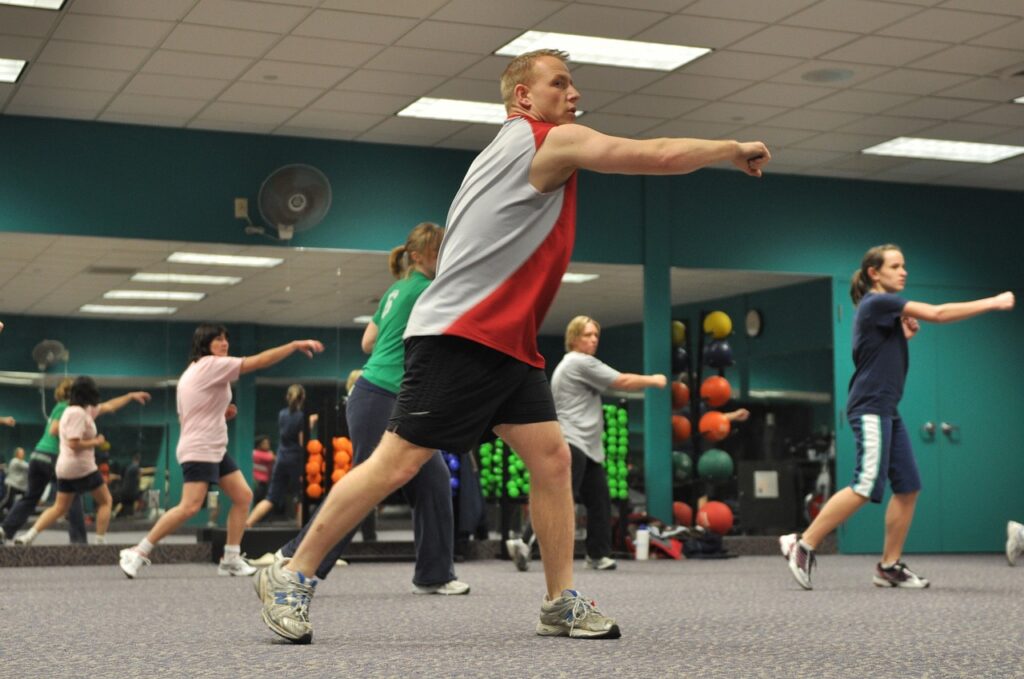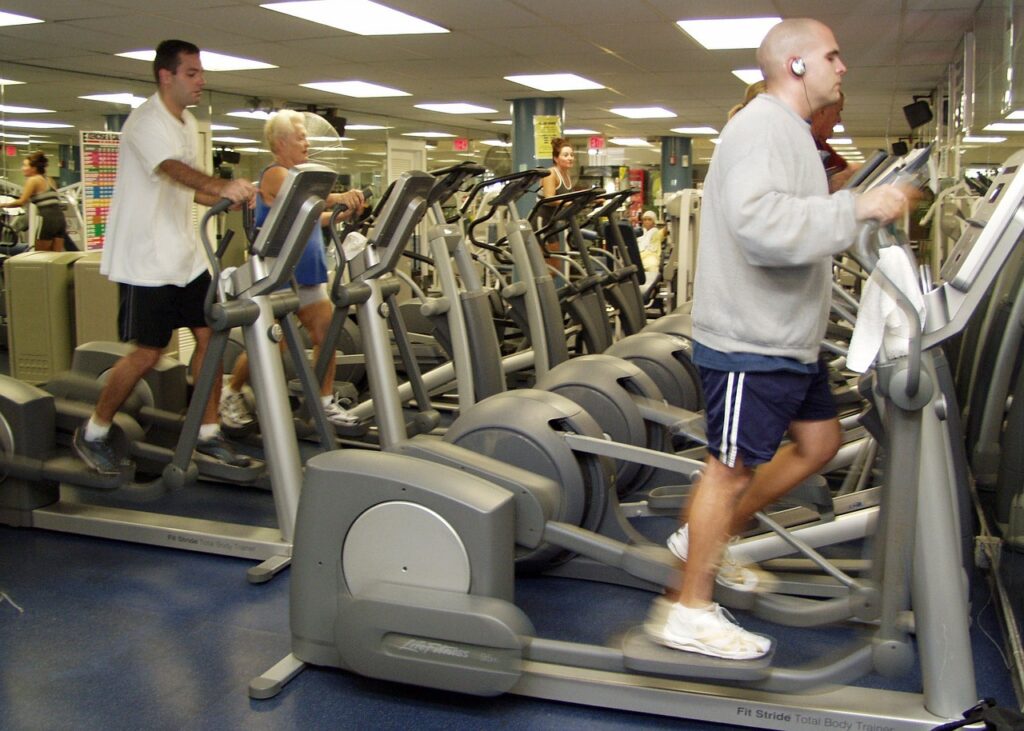Have you ever wondered how many calories you burn while exercising? Whether you’re hitting the gym, going for a run, or trying out a new workout routine, knowing the number of calories you’re torching can be extremely helpful for tracking your progress and reaching your fitness goals. Luckily, there’s a simple solution – a calorie burn calculator specifically designed for exercises. With this handy tool, it’s never been easier to find out exactly how many calories you’re burning during your workouts. Say goodbye to guesswork and hello to accurate calorie tracking!


The Basics of Calorie Burn
When it comes to maintaining a healthy weight and lifestyle, understanding how calorie burn works is essential. Calories are a unit of measurement that represents energy. They are the fuel our bodies need to function properly. Calorie burn refers to the number of calories you burn throughout the day, including during exercise. By understanding the basics of calorie burn and how to maximize it, you can make more informed choices about your physical activity.
Understanding Calories
Before we delve into calorie burn, let’s have a quick refresher on calories. A calorie is a unit of energy. In the context of food, calories refer to the amount of energy provided by the food we consume. When we engage in physical activities, our bodies burn calories to power those movements. The concept of energy balance is important here – if you consume more calories than you burn, you will gain weight, and vice versa.
Factors That Affect Calorie Burn
The number of calories you burn during exercise is influenced by several factors. Some of the key factors include your weight, body composition, age, gender, and the intensity and duration of your workout. Understanding these factors can help you better estimate and track your calorie burn during exercise.
The Role of Exercise in Calorie Burn
Exercise is one of the most effective ways to increase your calorie burn. The more intense and longer the exercise, the more calories you burn. Regular physical activity not only burns calories during the workout but also keeps your metabolism elevated, resulting in increased calorie burn even at rest. Additionally, exercise has numerous health benefits beyond calorie burn, such as improved cardiovascular health and increased muscle strength.
Different Types of Exercise and Calorie Burn
There are various types of exercise that can contribute to calorie burn. Let’s explore some of the most common ones.
Aerobic Exercises
Aerobic exercises, also known as cardio exercises, are activities that increase your heart rate and breathing rate. These include activities like running, cycling, swimming, and dancing. Aerobic exercises are great for calorie burn because they engage large muscle groups and require sustained effort. The longer you engage in aerobic exercise, the more calories you burn.
Strength Training
Strength training, also known as resistance training, involves working your muscles against resistance, typically using weights or resistance bands. While strength training may not burn as many calories during the workout itself as aerobic exercises, it helps build lean muscle mass. More muscle translates to a higher resting metabolic rate, which means you will burn more calories even when you’re not working out.
High-Intensity Interval Training (HIIT)
HIIT is a type of exercise that involves short bursts of intense exercise followed by short rest periods. This training method has gained popularity due to its ability to maximize calorie burn in a shorter period of time. HIIT workouts can include various exercises such as burpees, squat jumps, and mountain climbers. The intense bursts of movement keep your heart rate elevated and result in significant calorie burn even after the workout.
Yoga and Pilates
While yoga and Pilates may not have the same calorie-burning impact as aerobic or high-intensity exercises, they still provide numerous benefits. These exercises focus on improving flexibility, balance, and mind-body connection. They can be great additions to a well-rounded fitness routine and may help with stress reduction and overall well-being.
Outdoor Activities
Engaging in outdoor activities can be a fun way to burn calories. Activities like hiking, biking, and kayaking not only provide physical benefits but also allow you to enjoy the beauty of nature. The varied terrains and challenges of outdoor activities often result in higher calorie burn compared to indoor exercises.


Calorie Burn by Exercise Duration
The duration of your exercise session also plays a significant role in calorie burn. Depending on how long you engage in physical activity, the number of calories burned can vary.
Short Duration Exercises
Short duration exercises typically last for less than 30 minutes. Although the calorie burn during short workouts may not be as high as longer sessions, they still offer health benefits. Short workouts are great for busy individuals who have limited time but still want to engage in physical activity. Even a quick 15-minute workout can help boost your metabolism and burn some calories.
Moderate Duration Exercises
Moderate duration exercises typically range from 30 minutes to 1 hour. This duration allows for a more sustained calorie burn. Activities like jogging, swimming laps, or taking a group fitness class fall into this category. These exercises offer an excellent balance between burning calories and maintaining endurance and strength.
Long Duration Exercises
Long duration exercises refer to workouts that last for more than 1 hour. Endurance activities such as long-distance running, cycling, or participating in sporting events fall into this category. Long workouts can result in significant calorie burn and are often preferred by individuals training for races or endurance events.
Calorie Burn by Exercise Intensity
Exercise intensity refers to how hard you are working during your workout. The intensity of your exercise session has a direct impact on the number of calories you burn.
Low Intensity Exercises
Low-intensity exercises are generally less demanding on the body. Activities like walking, leisurely cycling, or gentle yoga fall into this category. While low-intensity exercises may not result in an immediate high calorie burn, they still contribute to overall physical well-being and can be beneficial for beginners or those recovering from injuries.
Moderate Intensity Exercises
Moderate-intensity exercises raise your heart rate and breathing rate, but you can still carry on a conversation while performing them. Examples include brisk walking, water aerobics, or moderate cycling. Moderate-intensity exercises strike a balance between calorie burn and sustainability, making them suitable for individuals of varying fitness levels.
High Intensity Exercises
High-intensity exercises push your body to its limits and require maximum effort. Activities like running sprints, high-intensity interval training (HIIT), or intense weightlifting fall into this category. High-intensity exercises result in a significant calorie burn during the workout and also boost your metabolism, allowing for continued calorie burn even when you’re at rest.


How to Estimate Calorie Burn During Exercise
While it is challenging to know the exact number of calories burned during a workout, there are several methods you can use to estimate calorie burn.
Using Heart Rate Monitors
Heart rate monitors can provide a good estimate of calorie burn during exercise. By wearing a heart rate monitor during your workout, you can track your heart rate and use various formulas to estimate the number of calories burned. These estimates are based on factors such as age, gender, weight, and the intensity of your exercise.
Estimating Calorie Burn without Equipment
If you don’t have access to heart rate monitors or other fitness devices, you can still make a reasonable estimate of calorie burn during exercise. Online resources provide calorie burn estimates for various activities based on factors like duration and intensity. You can use these estimates as a guide for your workouts.
Online Calorie Burn Calculators
There are numerous online calorie burn calculators available that allow you to input details such as your weight, height, age, and the type of exercise or activity you engaged in. These calculators use algorithms to estimate the number of calories burned during your workout. While they may not be 100% accurate, they provide a starting point for understanding calorie burn.
Maximizing Calorie Burn During Exercise
If you’re looking to maximize your calorie burn during exercise, there are several strategies you can implement.
Increasing Exercise Intensity
One of the most effective ways to increase calorie burn is by increasing the intensity of your workout. This can be achieved by adding resistance, increasing the speed or incline, or performing more challenging variations of exercises. As your body adapts to the increased intensity, you will burn more calories.
Incorporating Interval Training
Interval training involves alternating between periods of high-intensity exercise and periods of rest or lower intensity. This type of training keeps your heart rate elevated and challenges your body to work harder. Incorporating interval training into your workouts can significantly increase calorie burn and improve cardiovascular fitness.
Adding Resistance to Workouts
Adding resistance, such as using weights or resistance bands, can help build muscle and increase calorie burn. Muscles require more energy to function than fat, so the more muscle you have, the higher your resting metabolic rate. Incorporating strength training exercises into your routine can help increase your overall calorie burn.
Prioritizing Large Muscle Groups
Focusing on exercises that engage large muscle groups, such as squats, lunges, deadlifts, and bench presses, can lead to a higher calorie burn. These compound exercises work multiple muscle groups at once and require more energy expenditure. By working larger muscle groups, you can maximize your calorie burn during each workout.


Additional Factors That Impact Calorie Burn
In addition to exercise type, duration, and intensity, several other factors can impact your calorie burn during exercise.
Body Weight and Composition
Your body weight and composition play a role in how many calories you burn during exercise. Generally, a heavier person will burn more calories than a lighter person engaging in the same activity. Additionally, individuals with a higher percentage of muscle tend to have a higher metabolic rate and burn more calories.
Age and Metabolism
As we age, our metabolic rate tends to gradually decline. This means that older individuals may burn fewer calories during exercise compared to their younger counterparts. However, exercise can help mitigate age-related declines in metabolism and maintain calorie burn.
Gender Differences
There are slight differences in calorie burn between men and women. On average, men tend to have a higher metabolic rate due to having more muscle mass. However, individual variations exist, and it’s essential to focus on your own body and its unique needs rather than comparing yourself to others.
Environmental Conditions
The environment in which you exercise can also impact calorie burn. Exercising in extreme temperatures or at higher altitudes can increase energy expenditure due to the body’s need to regulate core temperature and adapt to environmental conditions.
Tracking Calorie Burn and Progress
Tracking your calorie burn and progress can help you stay motivated and make adjustments to your fitness routine. Here are a few methods for tracking your calorie burn:
Wearable Fitness Trackers
Wearable fitness trackers, such as smartwatches or fitness bands, can provide real-time data on your heart rate, steps taken, and calories burned. These devices often sync with smartphone apps or online platforms, allowing you to track your progress over time.
Smartphone Apps
There are numerous smartphone apps available that can help track your workouts and estimate your calorie burn. Many apps allow you to input details such as activity type, duration, and intensity, and they provide estimates of calories burned. Additionally, these apps may offer features like goal setting, workout plans, and social sharing to keep you motivated.
Fitness Journals
Keeping a fitness journal can be a simple yet effective way to track your workouts and progress. You can record details such as the type of exercise, duration, intensity, and how you felt during the workout. Over time, you can refer back to your journal to see how your calorie burn and fitness level have improved.


Safety Considerations for Calorie-Burning Exercises
While calorie-burning exercises have numerous benefits, it’s essential to prioritize safety. Consider the following safety considerations:
Seeking Professional Guidance
If you’re new to exercise or have any underlying health conditions, it’s wise to consult with a healthcare professional or a certified fitness trainer before starting a new exercise program. They can assess your fitness level, provide guidance, and help you create a safe and effective workout plan.
Proper Warm-Up and Cool-Down
Warming up before exercising and cooling down afterward can help prevent injuries and improve recovery. A dynamic warm-up, which includes movements that gradually increase heart rate and prepare the body for exercise, is essential. Similarly, cooling down with stretches and gentle movements can aid in reducing muscle soreness and promoting flexibility.
Listening to Your Body’s Limits
It’s crucial to listen to your body and respect its limits. Pushing yourself too hard or ignoring signs of fatigue or pain can lead to injuries. If something doesn’t feel right during a workout, it’s okay to pause, modify an exercise, or seek professional advice. Remember, exercise should be challenging, but it shouldn’t cause harm.
Conclusion
Understanding calorie burn and its relationship to exercise can empower you to make informed decisions about your fitness journey. By exploring different types of exercises, estimating calorie burn, and incorporating strategies to maximize calorie burn, you can create a personalized workout routine that suits your goals and preferences. Remember to prioritize safety, track your progress, and enjoy the process of improving your physical well-being. Here’s to a healthier and more active lifestyle!



